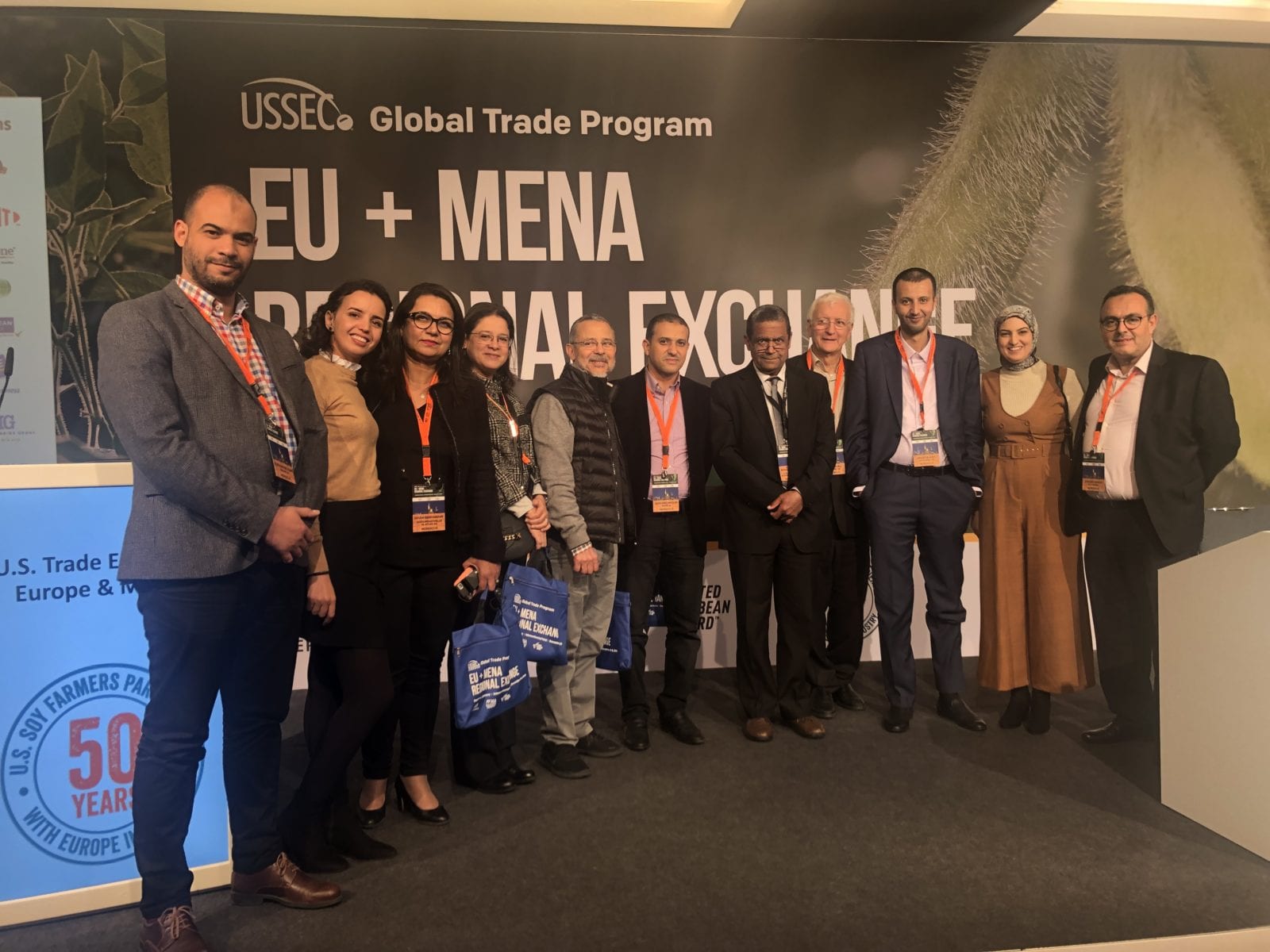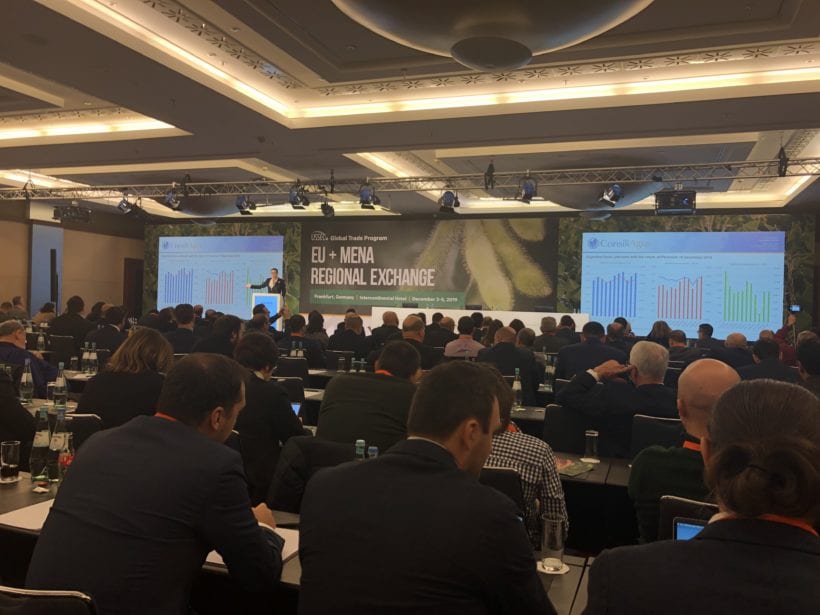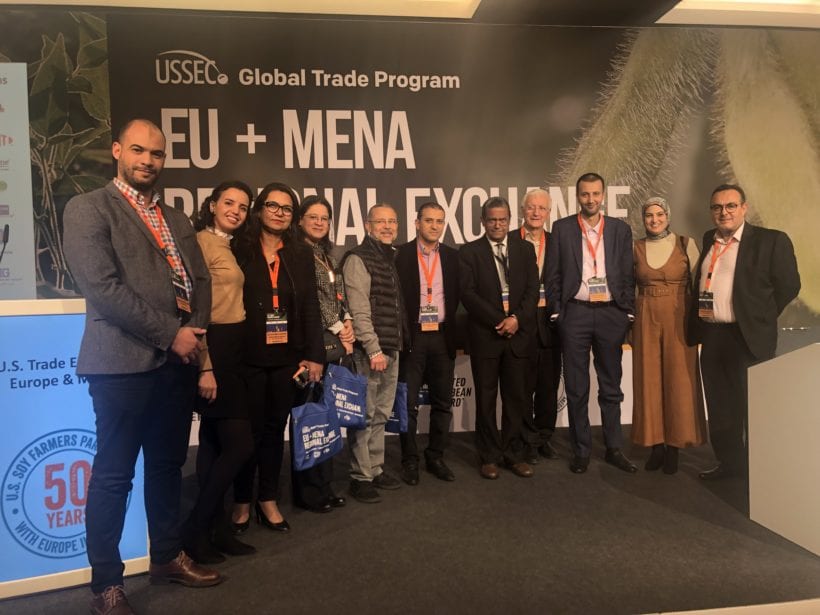Moroccan U.S. Soy Users Attend EU/MENA Regional Trade Exchange in Germany
- Category:
- General News

A diversified team of Moroccan professionals from key feed, poultry, dairy, and oil industries attended the Europe & Middle East North Africa (MENA) U.S. Soy Regional Trade Exchange held in Frankfurt, Germany on December 4 and 5. Leading poultry integrators, feed mills and integrators, dairy cooperative, vegetable oil refiner, an egg producer, and other main importers had the opportunity to meet other professionals and buyers from the greater region, traders, U.S. soybean farmers, and suppliers. As with previous editions, the conference was a great success with key attendees from several markets, and high level, quality experts and speakers. All team members greatly appreciated this regional forum, as connecting U.S. suppliers with local buyers and users have been key to developing trade relations.
The U.S. soy family celebrated 50 years of activities in Europe. In a panel led by USSEC CEO Jim Sutter, exporter companies confirmed that North Asia, the Middle East, and Europe will remain growth areas for U.S. Soy. Derek Haigwood, USSEC chairman and United Soybean Board (USB) director from Arkansas; Brian Kemp, USSEC and American Soybean Association (ASA) director from Iowa; and ASA director Joe Steinkamp (ASA) from Indiana, along with USSEC Regional Director – EU/MENA Brent Babb emphasized the sustainable aspects of U.S. Soy and the continuous efforts of U.S. farmers to supply quality products to their customers worldwide.
Alaoui Y., President of FISA, the Moroccan Poultry Federation, presented an overview of the Moroccan poultry sector and its soybean meal consumption. He highlighted that soybean meal imports closely follow the growth of the poultry sector, the main driver of demand followed by dairy. 30 feed mills and 6 integrations cover an output of 720,000 tons of poultry meat and 6.6 billion eggs. Average growth rate has been around 4.3% and 7.1% for poultry and table eggs respectively between 2008 and 2018. About 20.5 kg of poultry meat and 188 eggs per capita are currently consumed.
Morocco remains the leading U.S. soybean meal market both in MENA and Maghreb, estimated at tons mostly met by imports. U.S. Soy has a significant competitive advantage: users appreciate soybean meal for its consistent high nutrient profile and quality. No trade policy or logistics issues hinder supplies. All U.S. soy products benefit from a 0% duty tariff since FTA implementation in 2006.
USSEC programs expand knowledge on the strengths and intrinsic advantages of U.S. soy products to end users, diversify and develop demand resulting in increased gain confidence, and secure procurement from the U.S., which contributes to maintaining U.S. market share. Strengthening the U.S. as a major supplier of high quality soybean products is also part of the goal of USSEC targeted and original activities in the market. Developed within an innovative and reactive strategy, they also aim to convince new customers and young professionals of the quality and advantages of U.S. soybean products.



